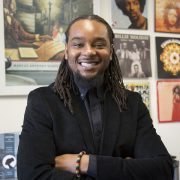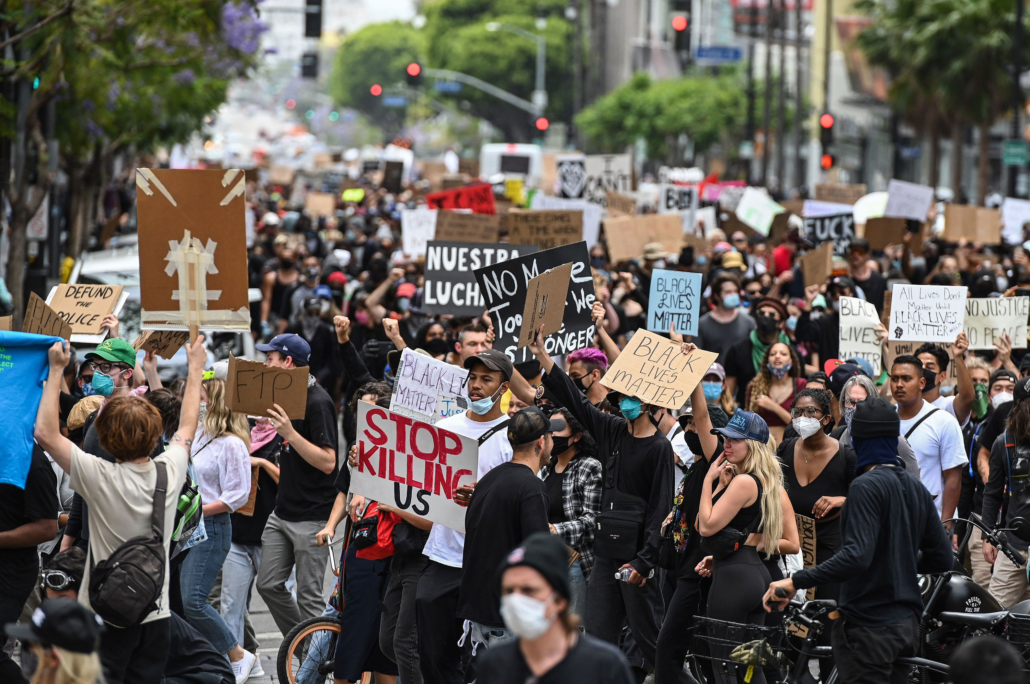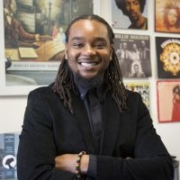
Photo Credit: Leroy Hamilton
By Marcus Anthony Hunter
Scott Waugh Endowed Chair in the Division of the Social Sciences, Associate Professor, Department of Sociology, CHAIR, Department of African American Studies; Principal Investigator
Over the course of the 20th century, Black Los Angeles has shifted from the east side of the city (Central Avenue in the early 1900s) to the west side of the city (the Crenshaw district after 1960). The organization of Black life along Central Avenue in the first half of the 1900s was produced by legalized forms of segregation, barring Black residents from accessing housing outside the Central Avenue area. Over time, however, Black residents integrated parts of the adjacent West Adams community that were not restricted by legal forms of discrimination.
Soon, though, the construction of the 10-Freeway in Los Angeles displaced much of the growing Black neighborhood in West Adams, pushing the center of Black Los Angeles further west to Leimert Park. By the 1960s, Leimert Park and the surrounding communities became major destinations for Black migrants from the American South, Africa and the Caribbean. With the passage of the 1968 Fair Housing Act, Black movement out of the Central Avenue area continued, leading to the rise of the area commonly known as South Central Los Angeles. Since then, this area has been the nexus of Black life, culture, entrepreneurship, arts and political power in Los Angeles.
Today, these neighborhoods are poised to undergo the most significant transformation they have experienced in decades. Los Angeles County has increasingly turned to transit improvement projects to alleviate traffic as the region continues to grow. In 2008 and 2016, voters approved sales tax increases to fund the expansion of regional transportation options, including: a light rail; a subway line that will connect the east and west parts of the city; and a Crenshaw/LAX Transit Line linking this network from the north southward to the Los Angeles Airport (LAX). City leaders consider it vitally important to connect the area’s rapidly improving transit infrastructure to LAX as well as the to the newly constructed Los Angeles Stadium at Hollywood Park – especially in advance of major events like the Olympics and Super Bowl. But these changes, and the ways that residents negotiate and navigate them, will inevitably transform Black LA.
So, how are we researching these changes?
The Chocolate Cities of Los Angeles: A Digital and Public Archive of Black Los Angeles is a multi-year, collaborative, and interdisciplinary research project examining the processes of urban displacement, gentrification and rebranding (e.g. Destination Crenshaw) as it is occurring leading up to and through the 2019 opening of the Crenshaw/LAX transit line. Our aim is to develop a lasting and much-needed repository and digital archive of the myriad chocolate cities thriving, surviving and disappearing across Los Angeles and surrounding communities since the city’s founding. Our diverse 12-person team includes members from three countries (the United States, Nigeria, and India), over eight U.S. cities and three UCLA departments (African American Studies, Sociology, and Social Welfare).
Upcoming Events:
Please join us TOMORROW, May 9th, 2018 at the California African American Museum at 6:00 PM to honor and engage in conversation with authors Marcus Anthony Hunter and Zandria Robinson on their new book Chocolate Cities: The Black Map of American Life.
This event will encompass an engaging conversation with the authors, amongst other speakers such as Scot Brown, Alma Burrell, Lynnée Denise, and Frankie “Kash” Waddy.
CLICK HERE TO RSVP








